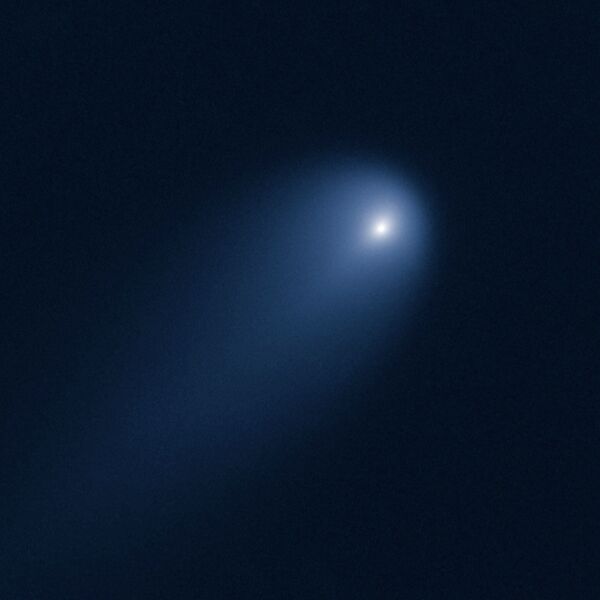WASHINGTON, April 24 (RIA Novosti) – The NASA Hubble Space Telescope has sent astronomers the first clear view of a comet discovered last year by Russian astronomers, as it hurtles toward the sun at 47,000 miles per hour (75,639 kph).
The comet, called ISON for the International Scientific Optical Network's 16-inch (40-centimeter) telescope near Kislovodsk that amateur astronomers Vitali Nevski and Artyom Novichonok used to discover it in September 2012, is on a path that will take it to within 700,000 miles (1.1 million kilometers) of the sun on November 28.
Like all comets, ISON is a clump of frozen gases mixed with dust, formed in a distant reach of the solar system. It travels on an orbit influenced by the gravitational pull of the sun and its planets.
ISON was previously believed to have a nucleus measuring three-to-four miles (4.8-6.4 kilometers) across, but the images from Hubble suggest that it is slightly smaller, at around 2.5 miles (4 kilometers).
As ISON approaches the sun, heat will cause some of the frozen gases in the nucleus to vaporize, but researchers at the University of Maryland, who have been following the comet since its discovery, think the nucleus is big enough to allow it to make it out of the sun’s orbit.

If that is the case, ISON, which has a tail that is believed to be at least 57,000 miles (92,000 kilometers) long is expected to be visible from Earth in late January 2014, even in broad daylight.
The comet poses no threat to Earth and is predicted to get no closer to the planet than 40 million miles (64 million kilometers), on Dec. 26 this year.
Hubble will still have ISON in view next week, and University of Maryland researchers plan to use the NASA space telescope to gather more information about the comet.
“We want to look for the ratio of the three dominant ices, water, frozen carbon monoxide and frozen carbon dioxide, or dry ice,” Maryland astronomy professor Michael A’Hearn said in a statement.
“That can tell us the temperature at which the comet formed and with that temperature, we can then say where in the solar system it formed,” he said.




